
Sustainability and Social Responsibility
Our Mission Statement includes aresponsibility to create, preserve, andexhibit an important cultural heritage, aswell as research the works of art and endowthem with meaning, providing access andeducation to a broad and diverse audience.
To this end, we want to foster valuesassociated with culture and tolerance, andbe a driving force in the local social andeconomic context.
The Museum undertook these commitmentsfrom the time of its inception. The Basquepublic institutions not only wanted toprovide the community with a culturalinstitution of the highest order. They alsowanted the Museum to be a prime mover inthe urban and economic transformation of Bilbao and the community it serves.
The Museum wishes to heed the EuropeanCommission calling for organizations to focus their activities on ways to benefit society as a whole. The GuggenheimMuseum Bilbao is a non-profit institutionaimed at the common good, but as such, it is also committed to going beyond the legal requirements and the very nature of its activities, by incorporating economic, social, and environmental policies into its management.
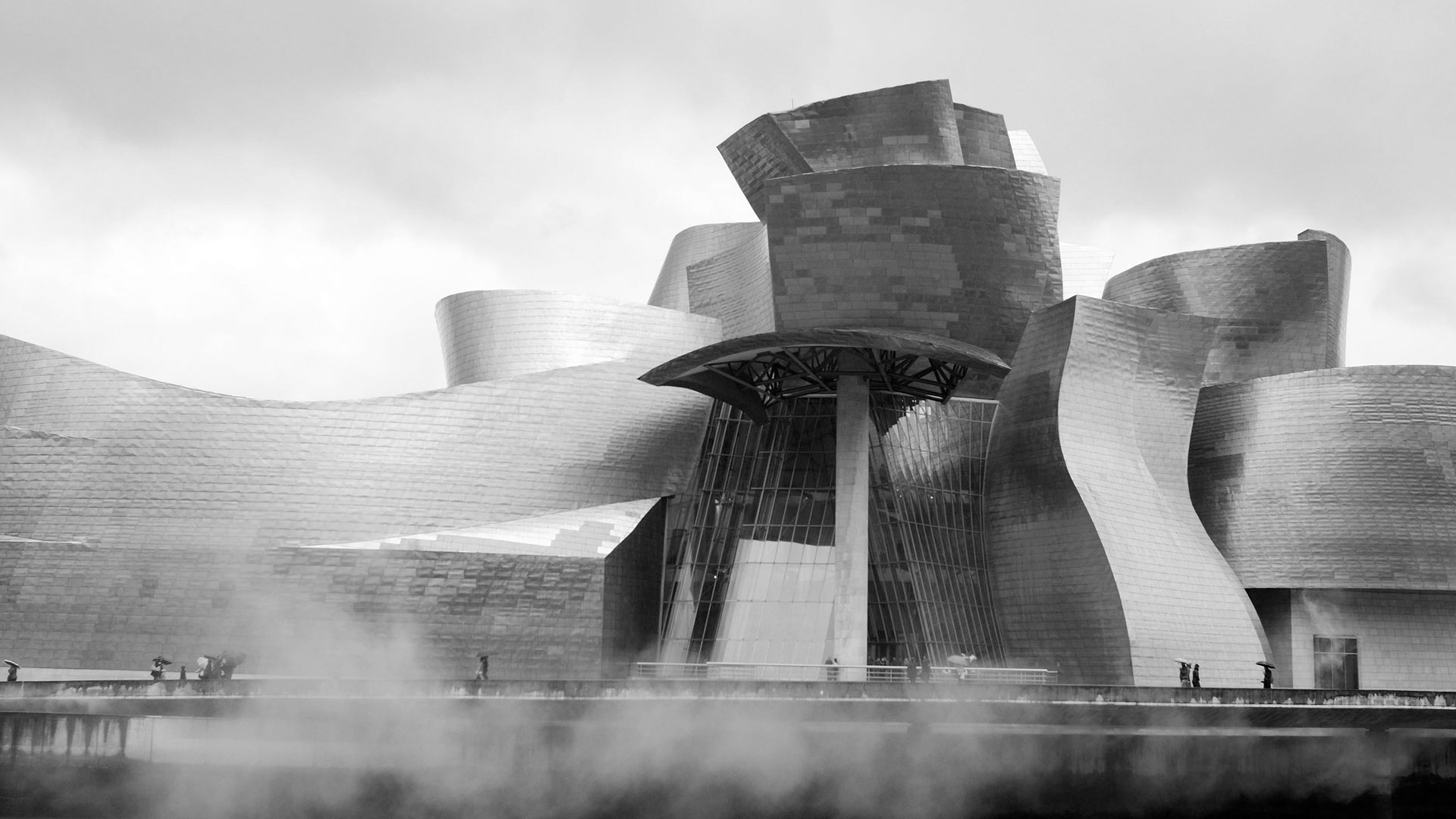
Accessibility
At the Guggenheim Museum Bilbao, we want everyone to take full part in culture and art. In certain circumstances, people with disabilities, the elderly, or children may find themselves at a disadvantage.
In Europe a number of initiatives have addressed the need to make buildings and services more accessible. In the Basque Country important steps have been taken to promote accessibility, passing the Promotion of Accessibility Act on December 4, 1997 (Law 20/1997).
Aware of these circumstances, the Museum decided to implement a global accessibility management system under the standard UNE 170.001-2. The Guggenheim Museum Bilbao was the first museum in the world to obtain this certification.
The strategy was based on the fact that no two visitors are alike; depending on language, cultural background, education, age, disabilities, and other factors, every person will engage with the Museum experience in a different way. Our aim is for everyone to enjoy the Museum and gain a better understanding and appreciation of art through a highly satisfying visit.
The analysis and implementation of this management system led to a number of changes to improve the Museum’s level of accessibility for all people, such as:
- voice synthesizers in different languages in Museum elevators
- re-installation of elevator call buttons to the recommended height and of control buttons in Braille
- improvement of rest room facilities, by adding baby-changing stations
- installation of a lift platform to access the Auditorium
- availability of wheelchairs and seats for the elderly and people with reduced mobility, plus free admission for escorts of wheelchair users
- installation of multimedia information points at different heights
- production of printed versions of audio materials
- training and awareness sessions for Museum staff
- publication of an accessibility guide
- availability of services and information in different languages
- improvements in signage
- automation of doors
- elimination of several architectural barriers
- production of Museum floorplans in Braille
- guided tours in sign language
- Museum video guides
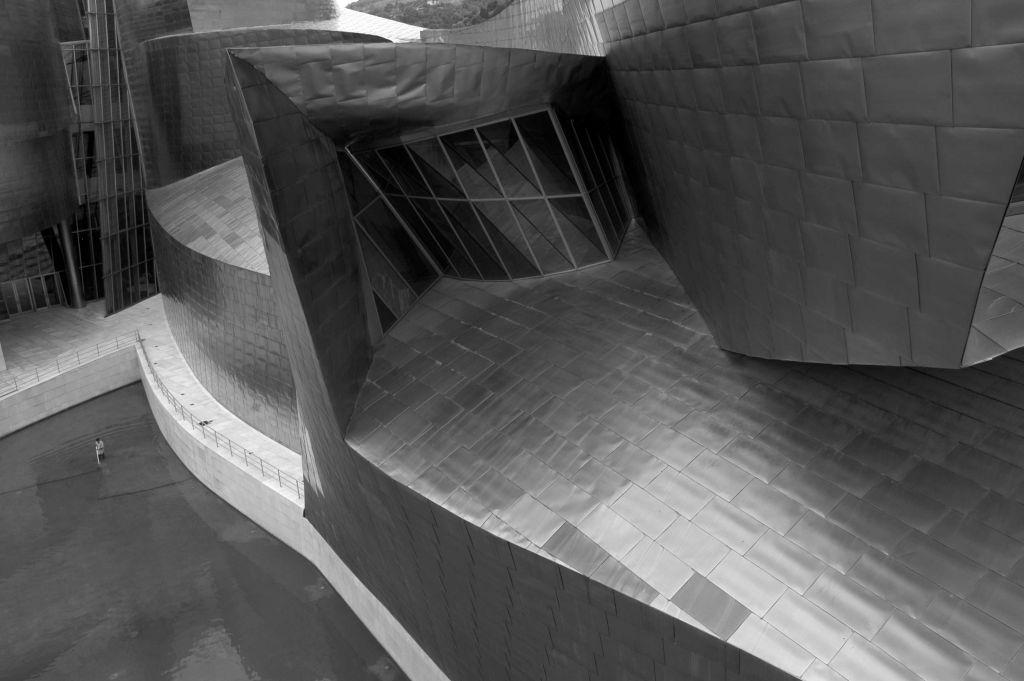
Innovation
Innovating is coming up with a new way of doing things and putting it into practice; it is approaching things from a new angle so that it will make them simpler, quicker, better, or different.
One of the strategic goals for the Guggenheim Museum Bilbao is the commitment to innovation, leading and participating in projects that may attract talent and wealth to our territory. To this end, we enter into alliances that allow us to implement strategic initiatives.
Here at the Museum, we do not think of innovation as an end in itself, but rather as a means for achieving various goals related to what we do (exhibitions, collections, educational programs, etc.), to our stakeholders (general public, Individual and Corporate Members, the Basque Institutions, etc.), or to our work processes.
Innovating does not merely require a heavy investment in technology; we must also re-imagine ways of making art attractive to increasingly diverse and discerning audiences, offer art education from new and multidisciplinary perspectives, and apply a mixed management model that incorporates both public and private involvement on different levels.
For us, the Museum model that allows us to be part of an international network which shares artworks, projects, and resources is innovative. We apply the concept of innovation to curatorial research into the pieces in our collection, to our conservation activities, and to education and our didactic programs, which we regularly update and redesign to reflect new demands, contents, and tools. We also apply innovation to our responsibility towards society in fields such as equal opportunities, gender equality, training, or diversity, thereby contributing to social transformation.
By innovating, the Museum stays up-to-date, adapts to the changing context, and redefines and reinvents itself to cater to new audiences, new situations, and new requirements.
Fully aware of our commitment, the Museum participates in social and other initiatives created to lead progress in these areas (Innobasque).
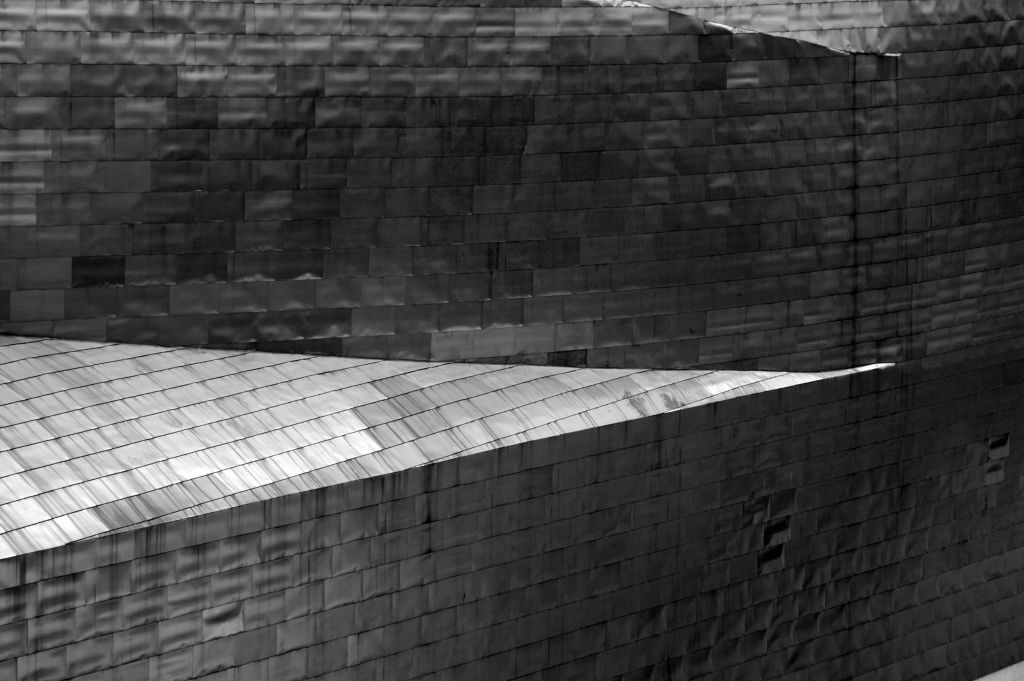
Environment
The Guggenheim Museum Bilbao is committed to environmental conservation and the principles of sustainable development.
The measures adopted by the Museum focus on minimizing the environmental impact of our operations and preserving the ecosystem, promoting conservation and striving towards a more eco-efficient working environment. In short, making the best use of resources with the least possible environmental impact.
Since its inception, the policy of the Museum has not only been to adhere to legal regulations and responsibilities in terms of permits, licenses, etc. Where possible, we have also implemented environmental protection measures that go beyond the legal requirements.
We have adopted pollution prevention and waste control systems, and criteria aimed at the efficient use of resources. The concern for responsible environmental behavior within our organization also led us to adapt our activities to meet assessable international quality standards.
Thus, after a process of applying environmental management guidelines based on ISO 14.001, the Museum was certified in 2004.
The implementation of the system under this standard gives us a structure to monitor the environmental impact of the Museum’s activities and services, and to improve the effectiveness of our environmental management system.
With proper management, we can minimize contamination, control environmental impact, and reduce waste.
In addition, the system encourages Museum employees and suppliers to adopt a more respectful attitude towards the environment.
The measures implemented in this area include the following:
- efficient energy use and reduction in electricity and gas
- recycling
- fitting out a safe space for hazardous materials
- reduction of noise impact in vicinity
- re-channelling of wastewater system (except rainwater runoff)
- external and internal environmental audits
- environmental education, training, and awareness sessions for Museum staff
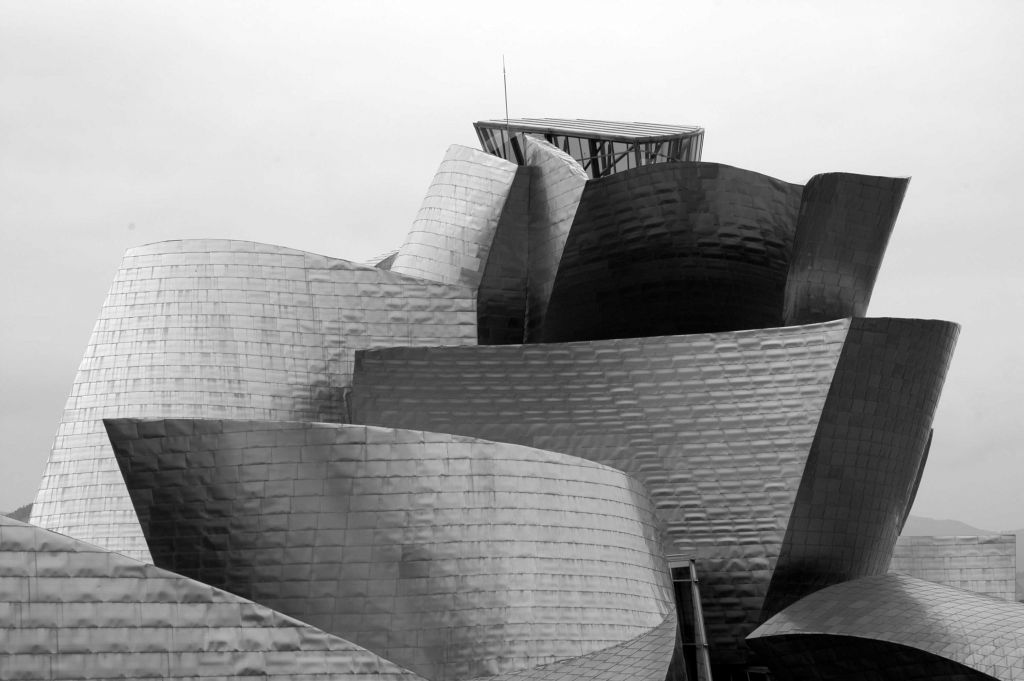
Certification and quality
The Museum has been awarded and recognized for its quality in these fields:
 Environment
Environment
Concerned with responsible environmental behaviour within our organization, the Museum implemented an environmental management system and was awarded ISO 14.001 certification in 2004.
This system provides a structure to monitor the environmental impact of the Museum’s activities and services, and to improve the effectiveness of our environmental management system.
The ISO 14.001 management system includes external and internal audits aimed at improving environmental impact goals and certifying their effectiveness.
Accessibility
On 19 December 2003, AENOR, the Spanish stardard and certification organization, awarded the Guggenheim Museum Bilbao with UNE 170.001-2 certification for having implemented a Global Accessibility Management System. The Guggenheim Museum Bilbao is the first organization in Spain to receive this certification and the first company in Europe to meet the MGLC requirements (Moving, Grasping, Locating and Communication).
The Museum’s global accessibility management system complies fully with the most recent legislation, which broadens the concept of physical accessibility to include equal opportunities, non-discrimination, and universal accessibility for disabled people.
Website
The Guggenheim Museum Bilbao has developed a website that prioritises the accessibility of its content, in compliance with the Accessibility Guidelines set out by the WAI Working Group (Web Accessibility Initiative, www.w3.org/wai), which is a member of W3C (World Wide Web Consortium).
Family-friendly company
In July 2009 the Guggenheim Museum Bilbao was awarded the ‘efr 1000-2’ Certificate from Fundación Másfamilia. The ‘efr’ is a stamp of approval given to companies that enable employees to balance their professional and family lives. The Museum is the first cultural institution in the Basque Country and the second in Spain to obtain this certification. In May 2011, the Museum renewed this certification with a significantly higher score than that obtained in 2009. This evidences the Museum’s commitment to continuous improvement and excellence in this matter.
The reconciliation of family and work life has always been paramount in personnel management at the Guggenheim Museum Bilbao. Since the Museum first opened, it has applied the maxim 100 people, 100 exceptions, and has worked with the staff to promote this culture in the workplace.
Certification helps to facilitate continuous improvement and increased productivity, and to enhance personal and professional development among Museum staff.
EFQM – Silver Q
The management model adopted by the Museum is based on EFQM Total Quality Management to improve operations and promote a culture of continuous improvement. In late 2004 the Museum decided to submit its management system to an external audit by the official Basque quality agency, Euskalit, and obtained the Silver Q for Quality Award.
The Guggenheim Museum Bilbao was the first museum in Europe to obtain the Silver Q. The award marked the culmination of a four-year process working on the EFQM Excellence model, identifying the processes in the Museum and implementing cycles of continuous improvement.
Social responsibility is one of the transversal elements of this system. We take an ethical and transparent approach and, as a responsible organization, try to understand and respond to the expectations of our stakeholder groups of interest.
The implementation of the EFQM system has led to formal policies which have translated into specific actions in the areas of development, environment, and society, providing greater benefits to the community.
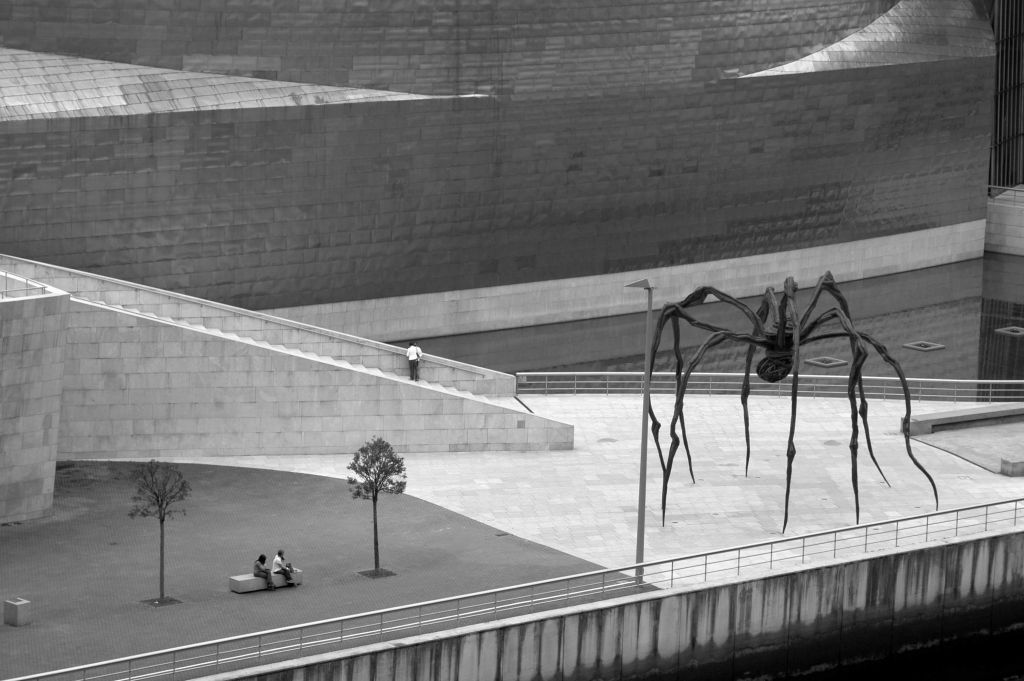
Volunteer Program
One of the ways the Guggenheim Museum Bilbao furthers its commitment to social responsibility and its mission of promoting an understanding and appreciation of art and culture among a wide range of audiences is the Volunteer Program, an initiative designed in a truly international context.
The program, aimed at Museum Individual Members, was launched in 2000 and was reshaped in 2007. From early on, our Members expressed an enthusiastic interest in supporting the Museum and making a commitment to community education by taking an active part in all of the activities organized by the Museum.
In this program, volunteers cooperate in different areas of the Museum and in different roles, based on their availability.
Volunteer activities include: orienting and attending to guests at formal Museum events; providing visitors and Museum Members general information on exhibitions, activities, and services; and giving introductory lectures and workshops on modern and contemporary art at homes for the elderly, cultural centres, or for groups at risk of social exclusion. With these activities, volunteers collaborate with the Museum to further our commitment to education.

Óptima Program
Grupo Óptima, in operation since 1999, is a group of Museum employees representing different professional categories, genders, family situations, and marital status. Óptima provides the Guggenheim Museum Bilbao with a platform for addressing issues such as the reconciliation of family and work life and equal opportunity. Museum objectives are also regularly analyzed to gain the broadest possible perspective.
The outcome of the most recent analysis of the premises and objectives of the Museum indicates that our policies with regard to gender are fair, equitable, and founded on the principle of solidarity.
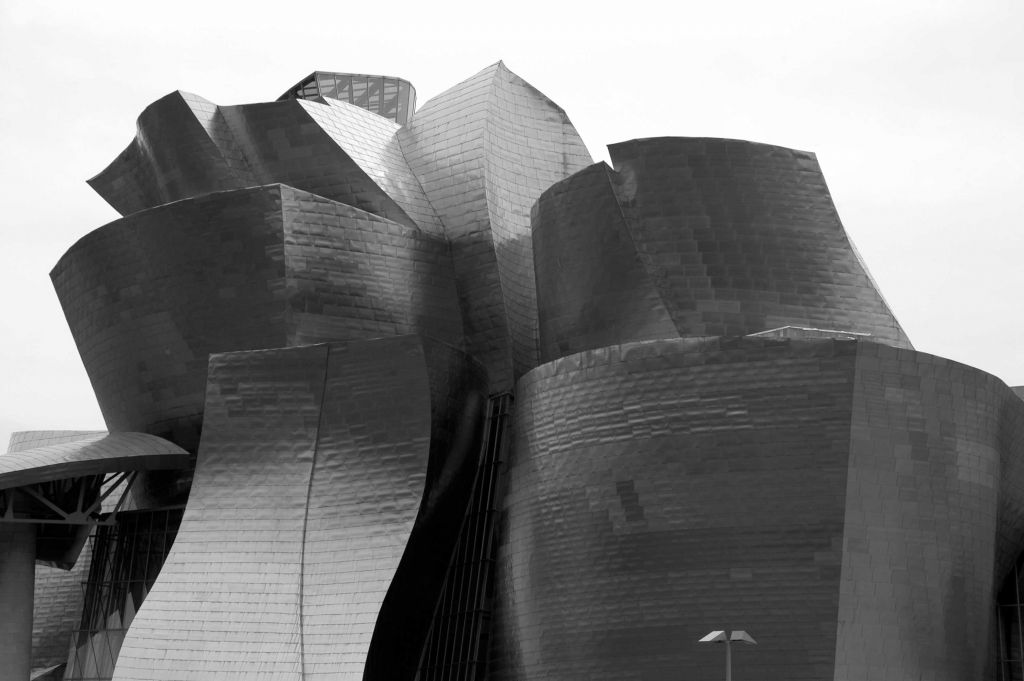
Awards
- Cambio 16 Award (Arts category), 1997
- Gebta Award, 1997
- Correo 97 Award “Promotion of the Basque Country”
- Actualidad Económica Award “Top 100 Ideas of 1997”
- Síndic de Honor 1998 Award, Consell de Síndics de l’ABC – Agrupació Borrianenca de Cultura
Mentioned by Time magazine as the best design of 1997 - Prix International Bâtiment non résidential de l’année 1998, Trends Top Construction
- Veteco Award to The Best Lightweight Façade, 1998
- Award to The best stone building, PAD, 1998
- Friedrich Kiesler Preises Award (art and architecture) to Frank O. Gehry for his design of the Guggenheim Museum Bilbao, 1998
- Cadena Cope, Comeravasa Award, 1997
- VIII Wintherthur–Economics Award to Corporate Sponsorship, 1998
- Protagonistas Award (arts), 1998
- “Tourism 1998” Award, Basque Government
- Iberfad Award, FAD Foment de les Arts Decoratives, 1998
- Santurtzi Stores Association Award “Zona 4”, “Sardina de Plata”, 1998
- Gold Medal of Merit in the Fine Arts, 1998
- IV International “Puente de Alcántara” Award, 1999
- “1999 Illumination Design Award”, 1999
- “Global Award”, Editur, 1999
- “The New York Festivals” Award to Ruiz Nicoli for video on the Guggenheim Museum Bilbao
- 2000 European Museum of the Year, 2000
- iBest Award to the best website (art and culture), 2000
- Buber 2000 Award to the best website, 2000
- Euskadi Komunikazio Saria 2000 Award, Radio Euskadi, 2000
- Special Jury’s Award, Annual OPC Spain Awards, 2000
- Outstanding Structure Award 2001, IABSE 2001
- Prix d’Excellence, FIABCI, 2001
- Modern World Wonder Award, Traveler magazine, Condé Nast, 2002
- Buber Award 2002 to the best cultural website, 2002
- UNE 170001-2 Certification, Global Accessibility Managament System, 2003
- Obert Plant Maresme 2004 Award to Monumental Gardening, 2004
- ISO 14001 Certification, Environmental Management, 2004
- Corporate Sponsorship and Patronage in Spain Award (Corporate Social Responsibility) to BBK (culture category) to their support to the program Learning Through Art, 2004
- “Silver Q” Certification, Euskalit, 2004
- Touristic Merit Award, Spanish Ministry of Industry, Tourism, and Commerce, 2005
- Recognition to the Museum by Novia Salcedo Fundación, 2005
- ASCOBI-BIEBA 2006 Award (Bizakaia Builders and Promoters Association), 2006
- Expansion Award “20 years of publicity” to the Best Original, 2006
- XVI Corporate Sponsorship and Patronage in Spain (Corporate Social Responsibility). Finalist: (culture category/museums) Arcelor and its initiative at the Guggenheim Museum Bilbao; and to the Museum’s Volunteers in the Pablo Durán Thornberg category
- La Ría del Ocio Award, 2007
- Maestro Escudero de las Artes 2007 Award, Fundación Museo Benedicto, 2007
- Vasco Universal 2007 Award, Basque Government and Caja Laboral, 2007
- Ohorezko Makila, Bilbao Chamber of Commerce, 2007
- El Correo Digital Award to the best Basque website (leisure and services), 2008
- Sol de Oro Award, Iberoamerican Advertising Communication Festival (Surreal Things TV ad), 2008
- Bronze in the festival El Ojo de Iberoamérica (Surreal Things TV ad), 2008
- Bronze, Laus Awards (Surreal Things TV ad), 2008
- Sol de Plata Award (Public relations, “Institutional and Community Relations” category) to the Tenth Anniversary advertising and PR campaign, 2008
- Euskal Makila Award, Fundación Empresa Vasca y Sociedad, 2008
- Bilbao Centro Stores Association Award, 2008
- APCP Award, Advertising Film Producers’ Association (Surreal Things TV ad, Premio Montogomery Kent), 2009
- Bronze Medal of the International FIAP Awards (Iberoamerican Advertising Festival) (radio advert Surreal cinema cycle), 2009
- Bronze of the International FIAP Awards (Iberoamerican Advertising Festival) (Surreal Things TV ad), 2009
- EFR Certification, Aenor/ Fundación Másfamilia, 2009
- Ministry of Industry Award to one of the best websites in the last twenty years, 2009
- International Protocol Award, 2009
- Bilbainía Award, 21st Century Professional and Business Women’s Association, 2009
- Bronze, BestPack Awards to the advertising campaign of the exhibition ©MURAKAMI, 2010
- Bronze, Laus Awards, to the advertising campaign of the exhibition ©MURAKAMI, 2010
- Sustainability Award within the Second Bizakaia Sarean Awards 2012
- Descubrir el Arte Magazine Award 2012
- Tripadvisor Certificate of Excellence 2012
- Buber Award 2012 to the Best Corporate Website
- Capital Ciudad de Bilbao prize, awarded by Capital journal to the institution that best projects the image of Bilbao outside
- Bronze Laus 2013 to the Museum website in the category “webs best adapted to mobile devices”
- Tripadvisor Excellence Certificate 2013
- Tripadvisor Travellers’ Choice 2013, qualifying the Guggenheim Museum Bilbao as the fourth best museum in Spain
- Lonelyplanet’s The world most beautiful buildings, which includes the Guggenheim Museum Bilbao as one of the most beautiful buildings in the world
